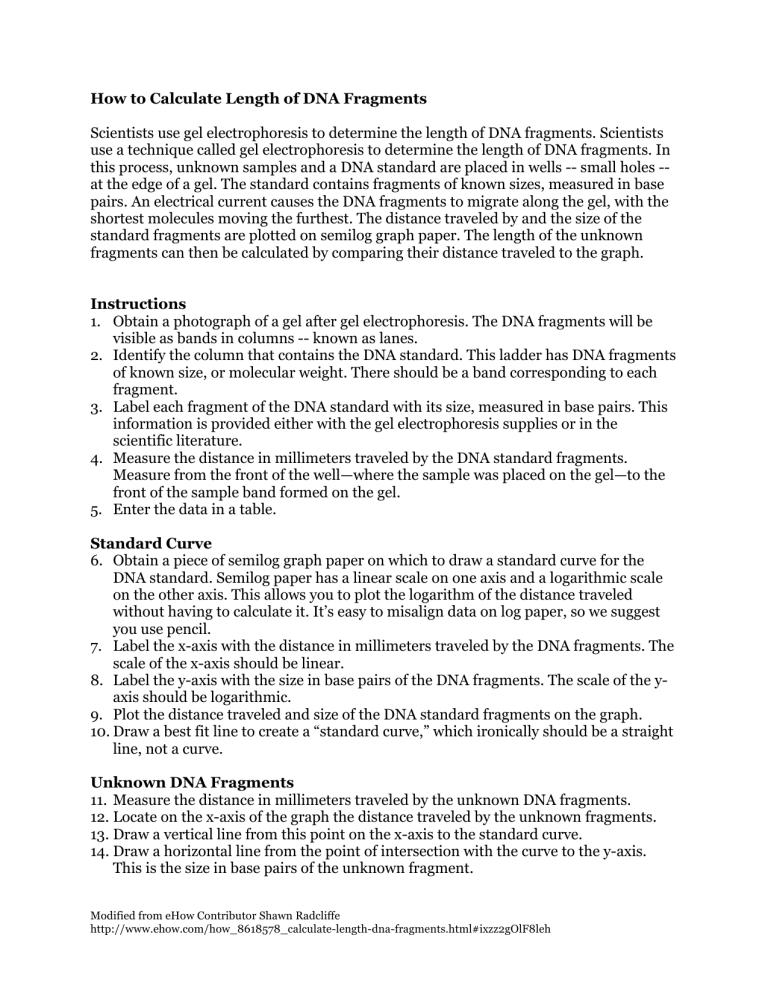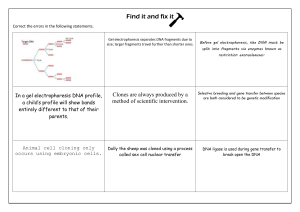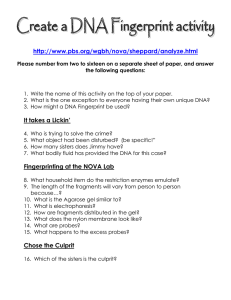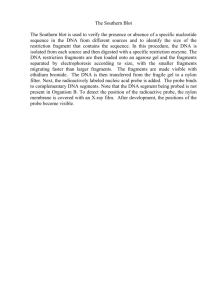
How to Calculate Length of DNA Fragments Scientists use gel electrophoresis to determine the length of DNA fragments. Scientists use a technique called gel electrophoresis to determine the length of DNA fragments. In this process, unknown samples and a DNA standard are placed in wells -- small holes -at the edge of a gel. The standard contains fragments of known sizes, measured in base pairs. An electrical current causes the DNA fragments to migrate along the gel, with the shortest molecules moving the furthest. The distance traveled by and the size of the standard fragments are plotted on semilog graph paper. The length of the unknown fragments can then be calculated by comparing their distance traveled to the graph. Instructions 1. Obtain a photograph of a gel after gel electrophoresis. The DNA fragments will be visible as bands in columns -- known as lanes. 2. Identify the column that contains the DNA standard. This ladder has DNA fragments of known size, or molecular weight. There should be a band corresponding to each fragment. 3. Label each fragment of the DNA standard with its size, measured in base pairs. This information is provided either with the gel electrophoresis supplies or in the scientific literature. 4. Measure the distance in millimeters traveled by the DNA standard fragments. Measure from the front of the well—where the sample was placed on the gel—to the front of the sample band formed on the gel. 5. Enter the data in a table. Standard Curve 6. Obtain a piece of semilog graph paper on which to draw a standard curve for the DNA standard. Semilog paper has a linear scale on one axis and a logarithmic scale on the other axis. This allows you to plot the logarithm of the distance traveled without having to calculate it. It’s easy to misalign data on log paper, so we suggest you use pencil. 7. Label the x-axis with the distance in millimeters traveled by the DNA fragments. The scale of the x-axis should be linear. 8. Label the y-axis with the size in base pairs of the DNA fragments. The scale of the yaxis should be logarithmic. 9. Plot the distance traveled and size of the DNA standard fragments on the graph. 10. Draw a best fit line to create a “standard curve,” which ironically should be a straight line, not a curve. Unknown DNA Fragments 11. Measure the distance in millimeters traveled by the unknown DNA fragments. 12. Locate on the x-axis of the graph the distance traveled by the unknown fragments. 13. Draw a vertical line from this point on the x-axis to the standard curve. 14. Draw a horizontal line from the point of intersection with the curve to the y-axis. This is the size in base pairs of the unknown fragment. Modified from eHow Contributor Shawn Radcliffe http://www.ehow.com/how_8618578_calculate-length-dna-fragments.html#ixzz2gOlF8leh



